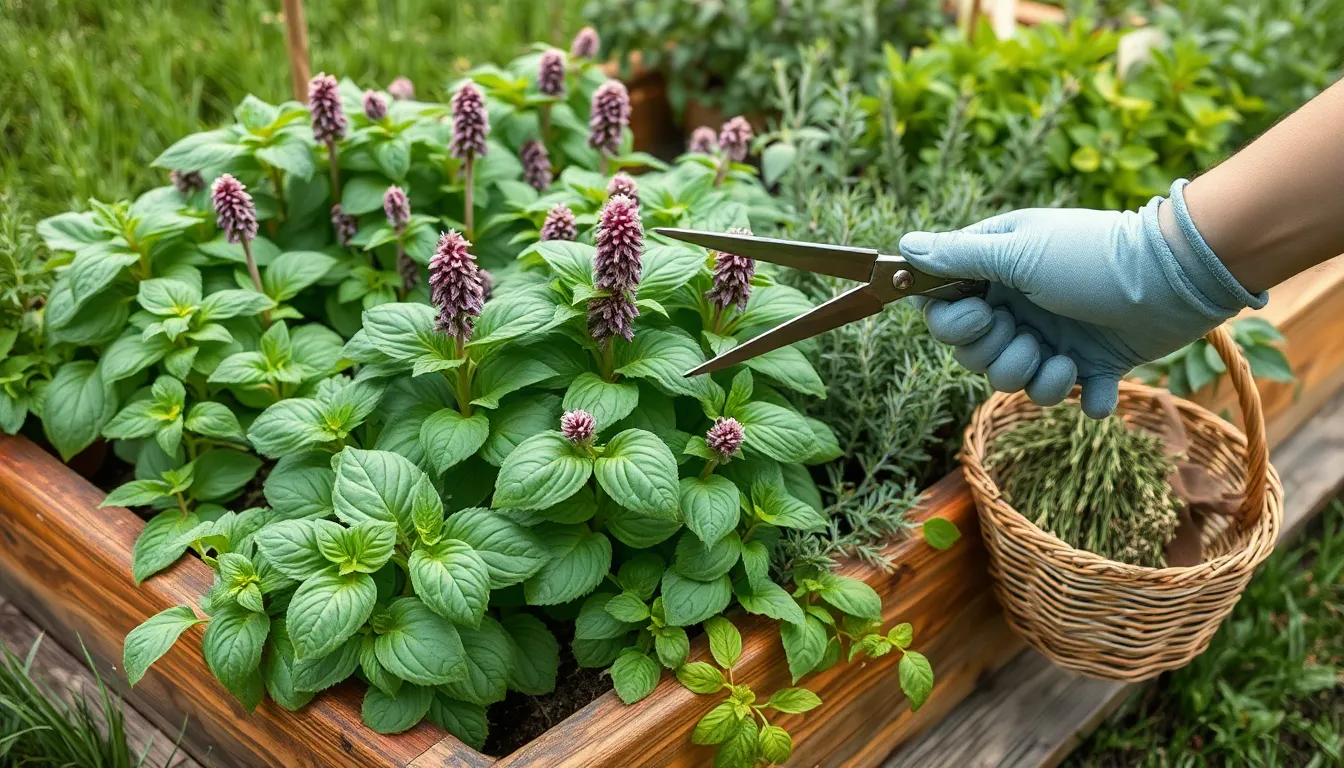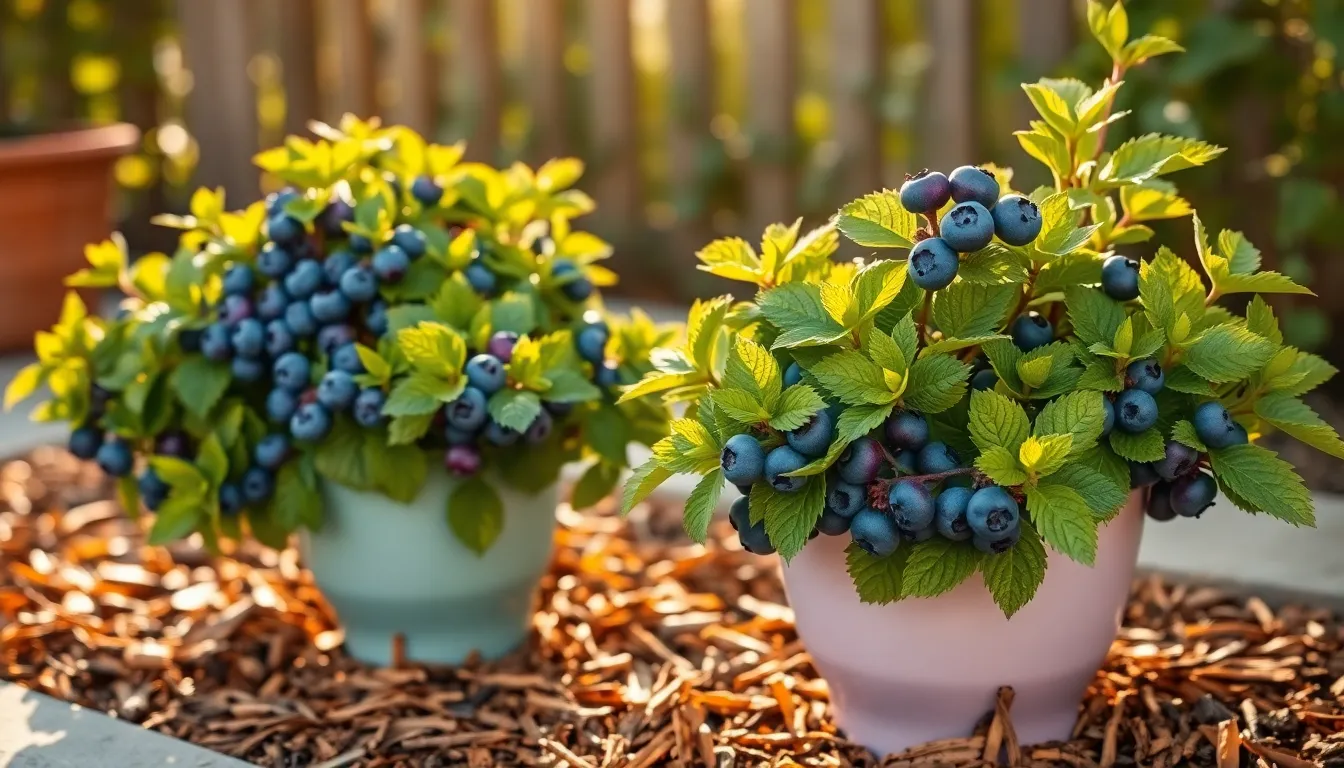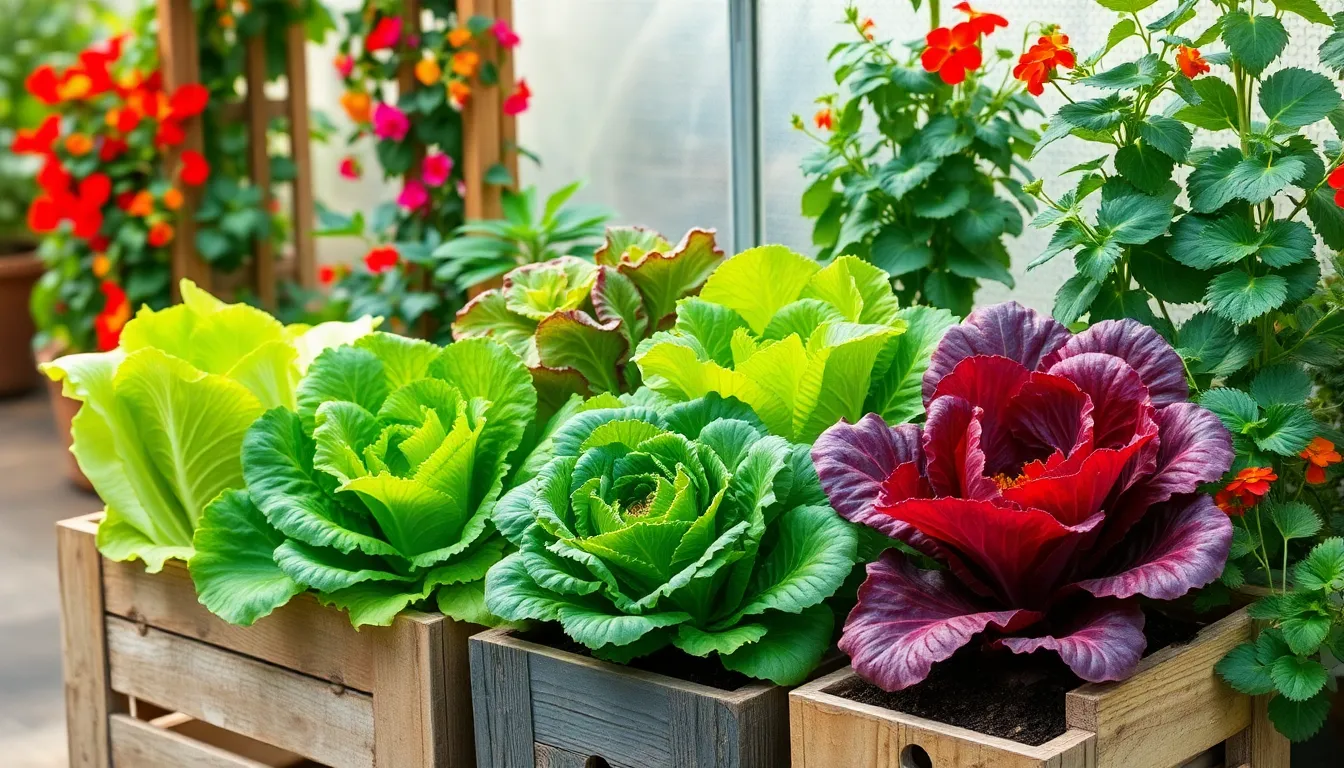Herb gardening is a delightful pursuit that offers an abundance of fresh flavors right at your fingertips, whether you’re a seasoned horticulturist or just beginning to cultivate your green thumb. The beauty of harvesting herbs lies not only in the aromatic leaves you gather but in the art of doing so in a way that keeps your plants thriving. In this article, we’ll delve into the advantages of harvesting herbs without killing the plant, a practice that ensures your garden remains a lush, perpetual source of culinary inspiration.
For those new to gardening, the idea of picking herbs without harming the plant might seem daunting, but rest assured, it’s an incredibly rewarding skill to master. Meanwhile, experienced gardeners will appreciate the nuances of this technique, which can significantly extend the life and productivity of their beloved herb beds. We’ll explore practical methods and tips to help you confidently snip away, knowing you’re doing so in harmony with nature’s rhythm.
By the end of this journey, you’ll learn how to encourage your herbs to grow back stronger and more bountiful after each harvest, maximizing both your garden’s yield and its health. We’ll cover essential techniques for various herbs, ensuring you have a comprehensive understanding of how to nurture and sustain your plants. Whether you’re looking to enhance your cooking or simply enjoy the verdant beauty of a well-cared-for garden, this guide will equip you with the knowledge to succeed.
Sustainable Harvesting Techniques
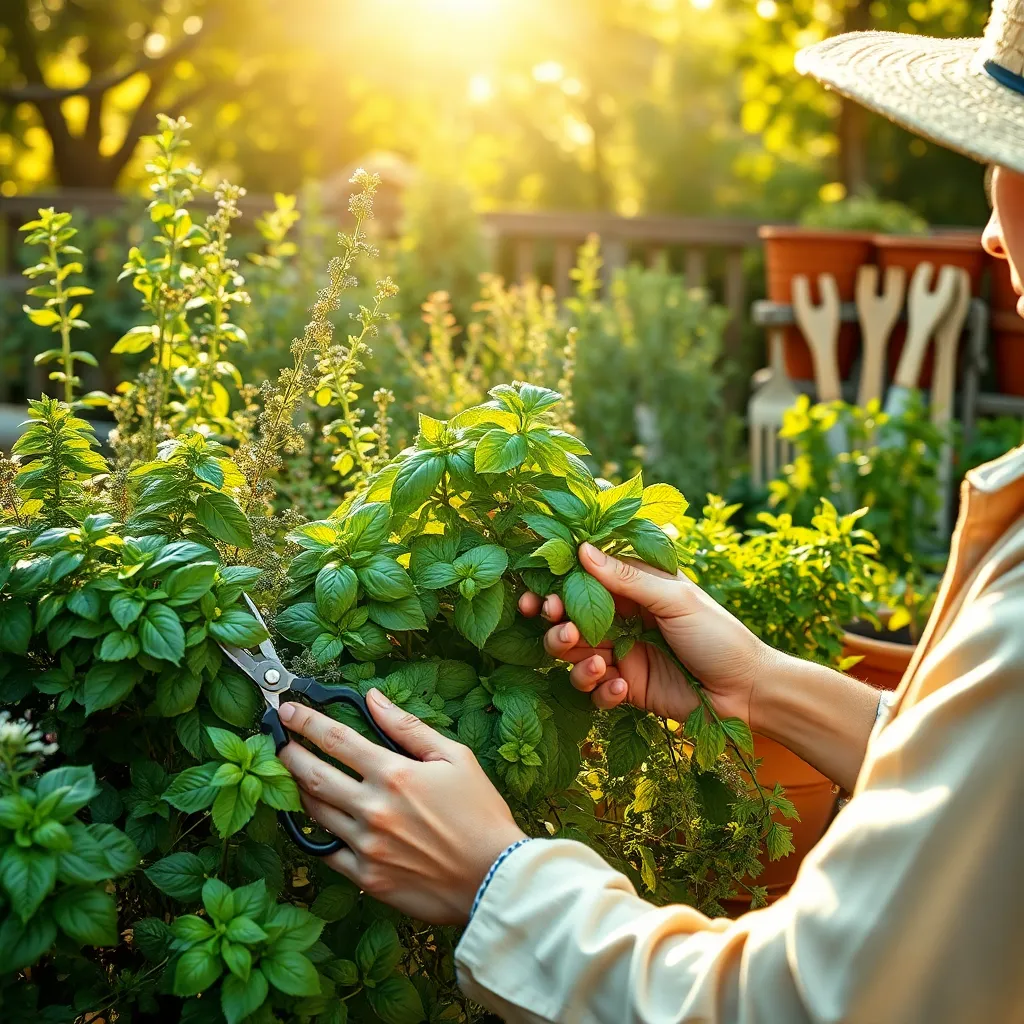
Sustainable harvesting ensures that you can enjoy fresh herbs without harming the plant, allowing it to continue producing. To achieve this, focus on pinching back leaves or stems, which encourages bushier growth and more abundant harvests.
When harvesting, make sure to use clean, sharp scissors or pruning shears to prevent damage to the plant. This practice minimizes the risk of disease and promotes faster recovery and regrowth.
For herbs like basil, mint, and cilantro, regularly harvest the top third of the plant. This method prevents flowering, which can alter the taste, and ensures the plant remains productive throughout the growing season.
Advanced gardeners might consider rotating harvests among different sections of the plant. This technique allows each part time to recover and helps maintain a steady supply of fresh herbs over time.
Ensure that the herbs are grown in well-draining soil with plenty of organic matter, as this supports continued healthy growth. Consistent watering, especially during dry spells, keeps the plants hydrated but avoid overwatering to prevent root rot.
Planting herbs in a sunny location, where they receive at least six hours of sunlight per day, optimizes their growth and flavor. For those with limited space, using containers can be an effective way to manage growing conditions and harvest strategically.
Boosting Herb Longevity
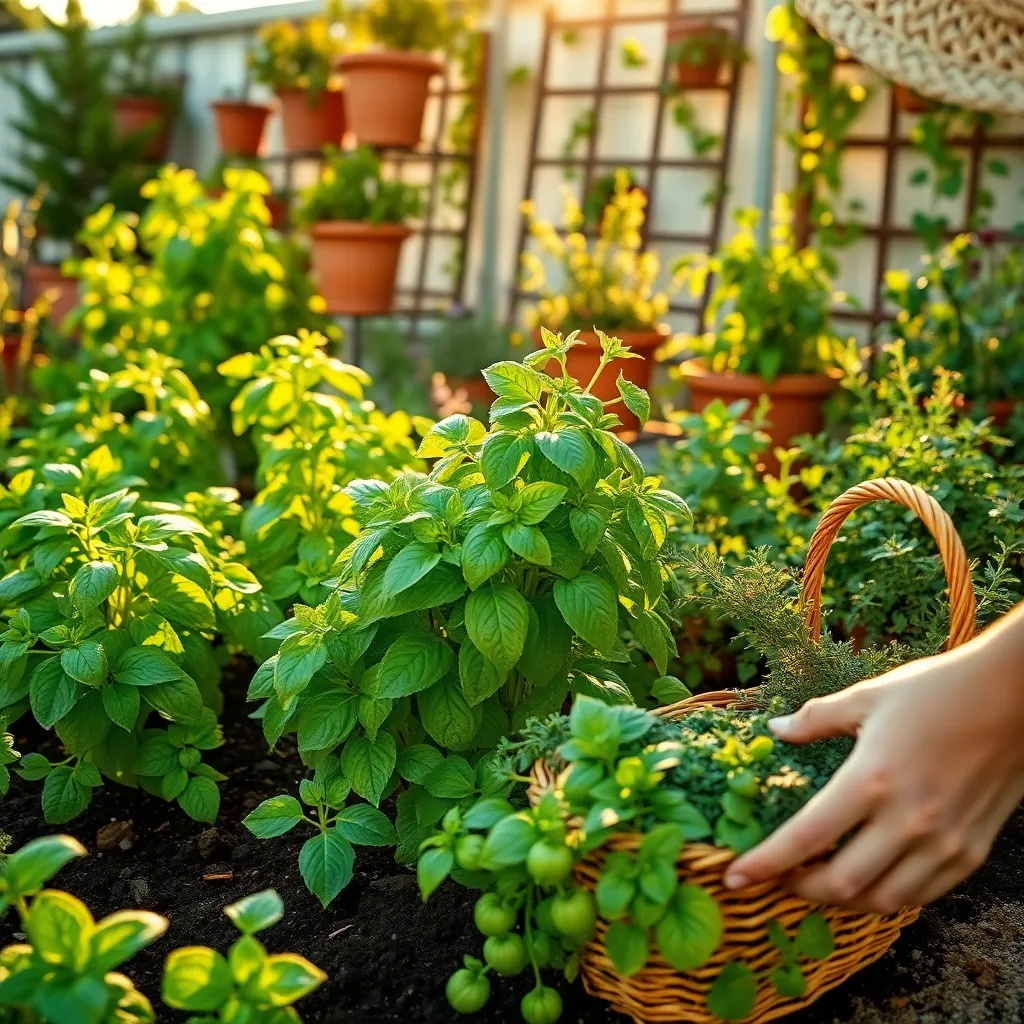
One of the keys to boosting herb longevity is to practice regular, gentle pruning. By removing no more than one-third of the plant at a time, you can encourage new growth and prevent the plant from becoming leggy.
Ensuring your herbs have the right soil conditions is crucial for long-term health. Herbs generally thrive in well-draining soil, so consider adding perlite or sand to your potting mix to enhance drainage.
Watering your herbs correctly can significantly impact their lifespan. Most herbs prefer to dry out slightly between waterings, so a good rule of thumb is to water them when the top inch of soil feels dry to the touch.
Providing adequate sunlight is another essential factor for healthy herbs. Many herbs require at least six hours of sunlight per day, so placing them in a south-facing window or under a grow light can be beneficial.
Advanced gardeners might consider rotating their herbs to prevent soil depletion and disease. By changing the location of your herbs every few months, you can ensure they continue to receive the nutrients they need for optimal growth.
Maximizing Yield and Flavor
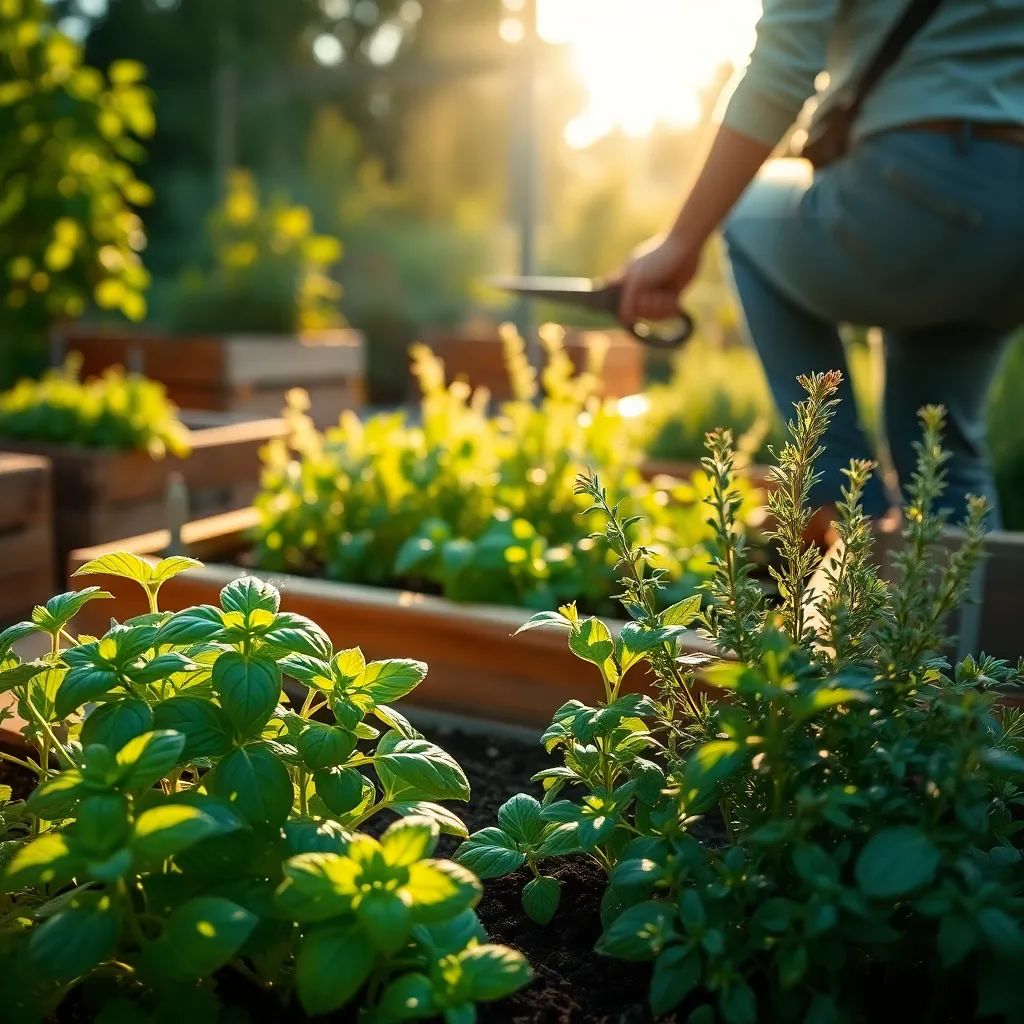
To maximize yield and flavor from your herbs, start by regularly pruning them. This encourages denser growth and prevents the plants from becoming leggy, ensuring a continuous supply of fresh leaves.
Proper watering is crucial to achieving robust flavor. Herbs generally prefer well-draining soil, so ensure your pots or garden beds have adequate drainage to prevent root rot.
For optimal growth, place your herbs in a location where they receive at least six hours of sunlight daily. This exposure not only promotes vigorous growth but also enhances the essential oils in the leaves, making them more flavorful.
Beginners should focus on consistent harvesting to encourage new growth. Pinching off the top few inches of each stem every couple of weeks helps maintain plant health and prevents flowering, which can reduce leaf quality.
Advanced gardeners might consider fertilizing with a balanced, organic fertilizer every four to six weeks during the growing season. This provides essential nutrients that can boost both yield and flavor without harming the plant.
Incorporating companion planting can also enhance herb flavor. For example, planting basil next to tomatoes can boost their yield and flavor due to shared nutrients and beneficial interactions.
Ensuring Continuous Growth
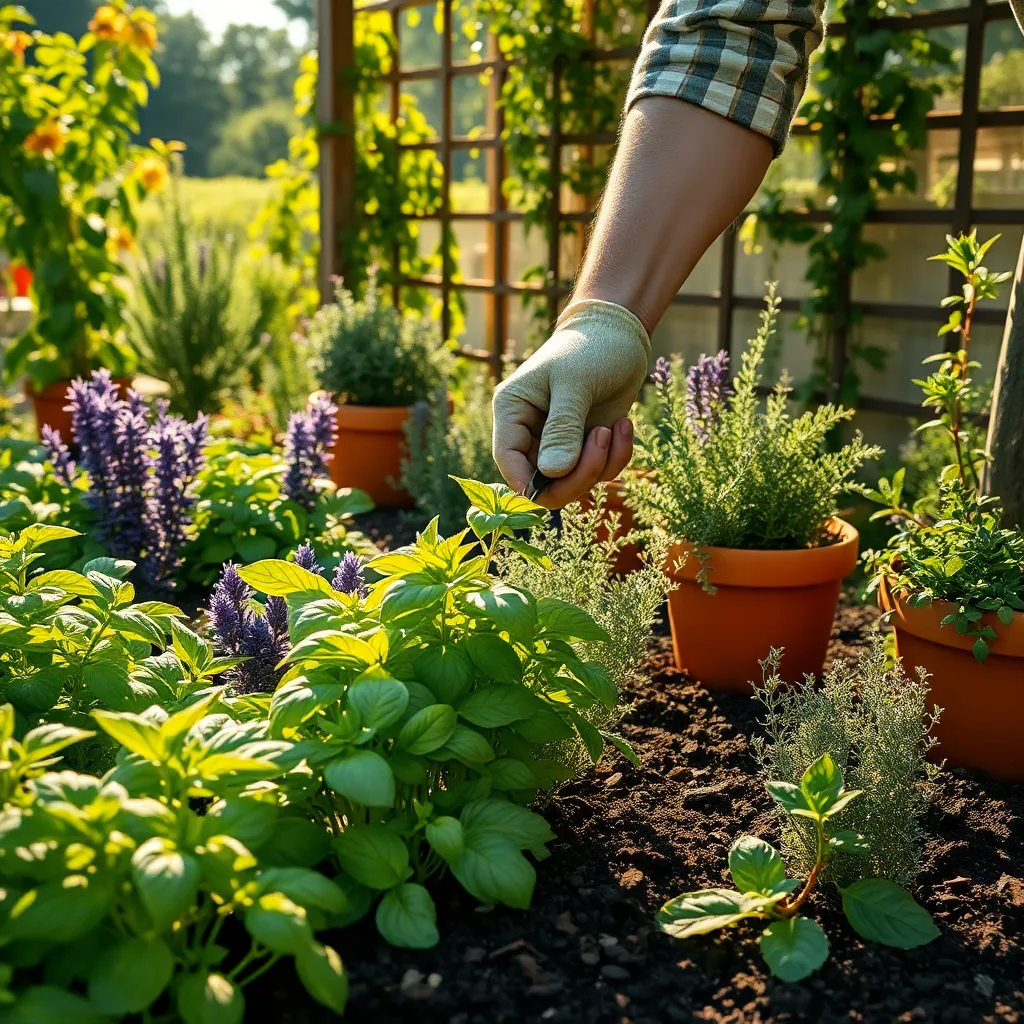
To ensure continuous growth when harvesting herbs, it’s crucial to use the right tools and techniques. Always use sharp scissors or pruning shears to make clean cuts, which promote healthy regrowth and prevent damage to the plant.
Timing your harvest is equally important to encourage ongoing growth. Generally, the best time to harvest herbs is in the morning after the dew has dried but before the sun gets too hot, as this is when the essential oils, which contribute to flavor and aroma, are most concentrated.
Regular pruning is a simple yet effective technique to maintain the vitality of your herb plants. For beginner gardeners, a good rule of thumb is to never remove more than one-third of the plant at a time, which allows it to recover quickly and continue growing vigorously.
For more advanced gardeners, consider employing a practice known as “cut-and-come-again.” This involves harvesting the outer leaves of the herb plant while leaving the inner foliage intact, thereby encouraging a continuous cycle of growth and yield.
Eco-Friendly Gardening Benefits
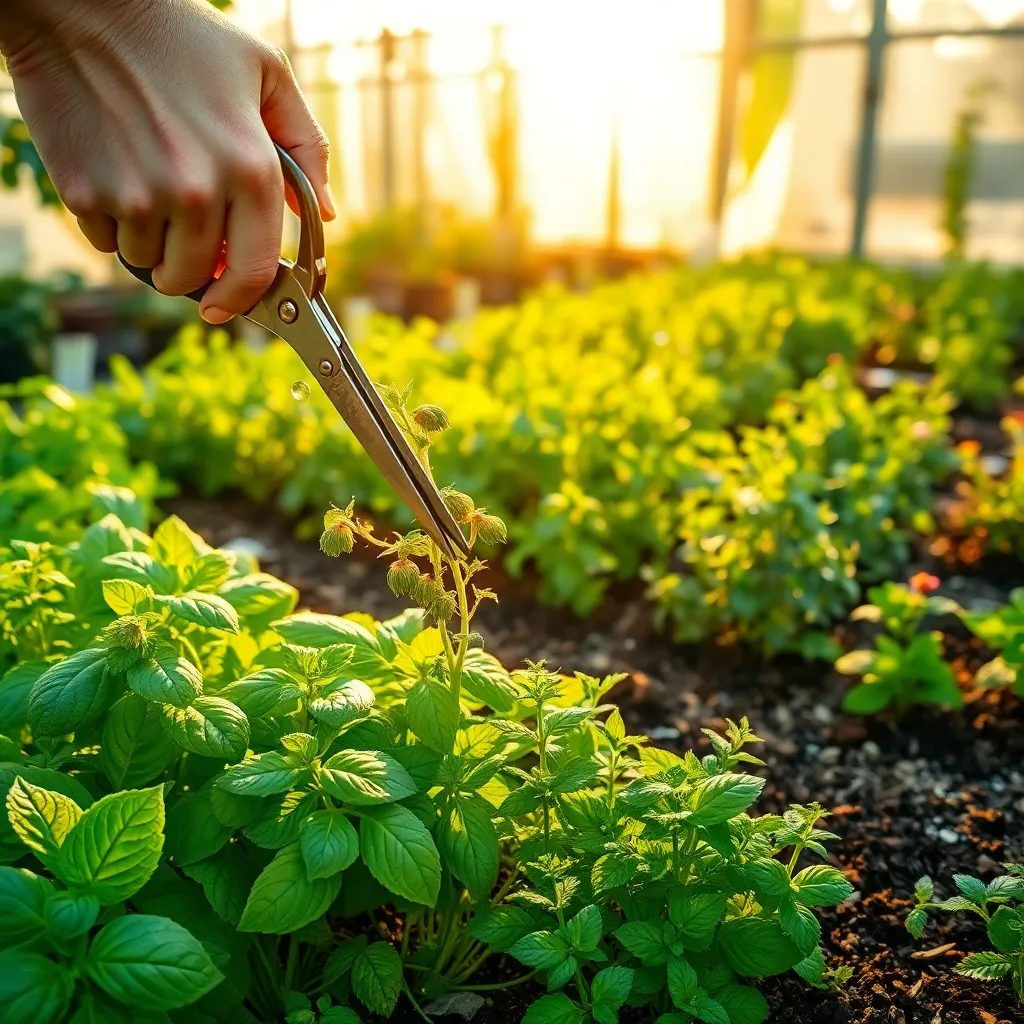
Eco-friendly gardening not only benefits the environment but also enhances the health of your herb garden. By using sustainable practices, you can create a thriving ecosystem that supports continuous plant growth and biodiversity.
One effective method is to incorporate composting into your gardening routine. Composting enriches the soil with nutrients, reducing the need for chemical fertilizers and promoting healthier, more resilient plants.
Consider using rainwater harvesting as a sustainable watering technique. Collecting and utilizing rainwater helps conserve water resources and provides your herbs with naturally soft water, which is generally better for their growth.
For pest control, adopt natural solutions like introducing beneficial insects such as ladybugs and lacewings. These insects help manage pest populations without the need for harmful pesticides, ensuring a balanced garden environment.
Conclusion: Growing Success with These Plants
In nurturing relationships, much like harvesting herbs, the key lies in sustaining growth without causing harm. This article explored five vital concepts: the importance of communication, respecting boundaries, nurturing trust, practicing empathy, and celebrating individuality. These elements are akin to tending a garden, ensuring that love and connection flourish over time.
To immediately enhance your relationship, choose one concept and dedicate time today to practice it with your partner. Whether it’s actively listening, respecting personal space, or sharing a moment of gratitude, small steps can lead to profound changes.
Remember, cultivating a thriving relationship is a journey, not a destination. Bookmark this article as your go-to guide, and revisit it whenever your relationship garden needs tending. By doing so, you’re investing in a future where love and mutual respect continue to grow.
As you embark on this path, envision a relationship where both partners feel valued and understood. The seeds you plant today will blossom into lifelong companionship. Embrace the journey, and let this guide be your companion in nurturing a love that lasts.

